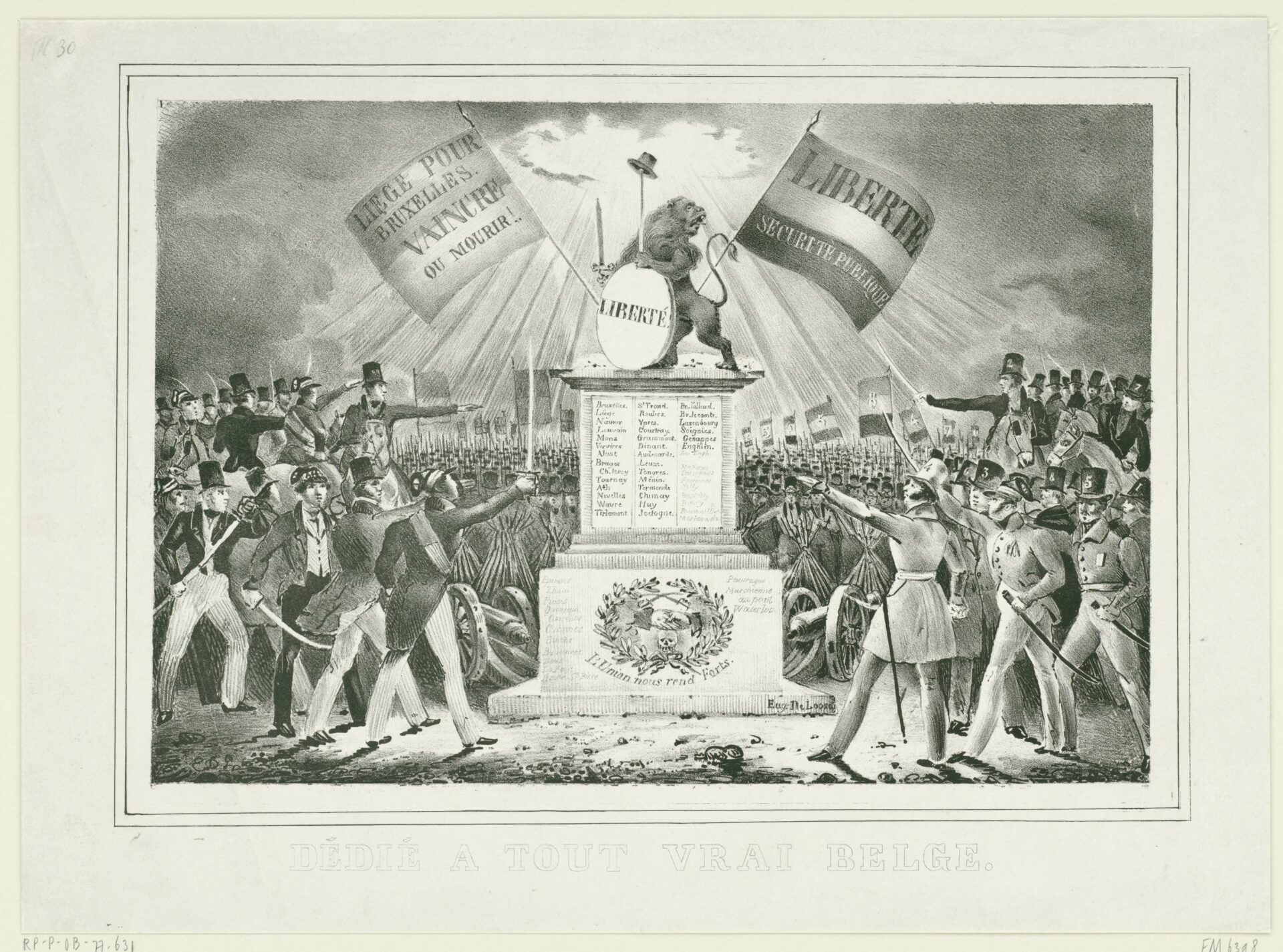From the Covid-19 lockdowns to climate issues, many elements included in the Belgian Constitution still have an impact on current topics and debates and influence the outcome, however, few people are aware of its history and existence.
The Belgian Constitution was adopted on this day (7 February) in 1831. While it is still in force today — it remains the foundation of the rule of law — and influences the lives of people living in the country on a daily basis, knowledge about the constitution is limited in Belgium, especially compared to for example in the United States, of which amendments are still regularly cited.
"The Belgian Constitution is among the oldest constitutions still in use. Only the American and Norwegian ones are older," KU Leuven professor and co-initiator Stefan Sottiaux, who specialises in constitutional law, said. "We can be quite proud of that."
Aside from its historic importance, knowledge of the Constitution (constitutional literacy) is an important foundation of a democratic society. This guide sets out everything you need to (and want to) know about the Belgian bill of rights.
Ten days for draft
The Belgian Constitution has its origins in the Belgian revolution of 1830 and 1831. On 25 August 1830, a group of rioters gather around the Monnaie Theatre in Brussels, a few minutes away from the city's Grand Place.
Here, the opera La Muette de Portici (The Mute of Portici) is being staged for the birthday of the Protestant King Willem I — who reigned over the Northern and Southern Netherlands (Belgium) to widespread dissatisfaction — giving rise to local riots, first in Brussels but later also in the Catholic Southern cities and provinces, eventually leading to an open revolt against the Dutch Government.
The King tried to control these uprisings militarily, but the army was also split, with the southern soldiers deserting en masse. Because of this army defeat, Belgium's Provisional Government proclaimed the country independent on 4 October 1830 by decree — this was recognised by the Treaty of London in 1832 — and appointed a new king: Leopold of Saxe-Coburg.

Allegory of the unanimity of the Belgians in the revolt in 1830. Credit: Rijksmuseum Amsterdam
Two days later, on 6 October 1830, a Constitutional Commission met to work out a draft. As the creation of the Constitution took place in a revolutionary context, meaning it was for a new state and completely new rules were needed, one could expect it would take some time for the revolutionaries to draw up a draft, however, it took them just ten days (until 16 October).
The Constitution Commission submitted the draft Constitution to the Temporary Government on 27 October 1830, which promptly transmitted it to the National Congress.
French inspiration
When the discussions on the Belgian Constitution were completed, the document was voted on and adopted by the National Congress on 7 February 1831. The new document gave Belgium the status of a national, hereditary, constitutional and representative monarchy.
At the time, it consisted of 139 articles divided into eight titles, of which the Belgian revolutionaries considered the second, titled "Des Belges et de leurs droits" so important that the entire constitutional system was aimed at protecting those rights. The third is another key title as its articles deal with the separation of legislative, executive and judicial powers.
As many freedoms as possible were included in black and white, however, a balance was provided between stability and flexibility, meaning there is room to adapt the text relatively easily, but the philosophical core remains intact. This ensures that contemporary themes, such as gender identity, can be easily incorporated into the constitution.

Allegory of Liberty with the Constitution carried by the different social classes, 1852
Many aspects of the Belgian Constitution as was decided on then are based on the ideas of philosophers such as Montesquieu and Benjamin Constant as much of its basis lies in the philosophy of French liberalism: with "liberté en tout et pour tous" (freedom in everything and for everyone), Belgium even had its own slogan to match France's national motto (liberté, égalité, fraternité).
Interestingly, as many of the key figures in the run-up to the Belgian Revolution were journalists, freedom of the press and a ban on censorship are among the central freedoms in the text. Its authors were also almost all in their twenties, which explains why the text is so progressive, especially for the time.
The Constitution today
The original version of the Constitution is kept in a vault in the Federal Parliament. It is still incomplete, as the creators wanted to add a "preamble," an introductory text explaining the underlying philosophy and foundations, as is custom for a constitution worldwide, but this has never materialised to this day.
The current Constitution includes 198 articles that define the fundamental rights and the basic structure of Belgium.
To mark the 192nd anniversary of the Belgian Constitution, Belgian University KU Leuven launched a website to highlight its importance to a wide audience. It details its history, specific texts of the Constitution, as well as explanations of current issues and debates in which it still plays a crucial role.
Raf Geenens, Professor of ethics and philosophy of law and initiator of the website, noted that the fact the Constitution is not widely known in Belgium is likely because of its status as a federal state, which consists of one central government and a number of subdivisions that all have their own powers that cannot be restricted by the central authority. "Maybe the federal level has become less popular."

